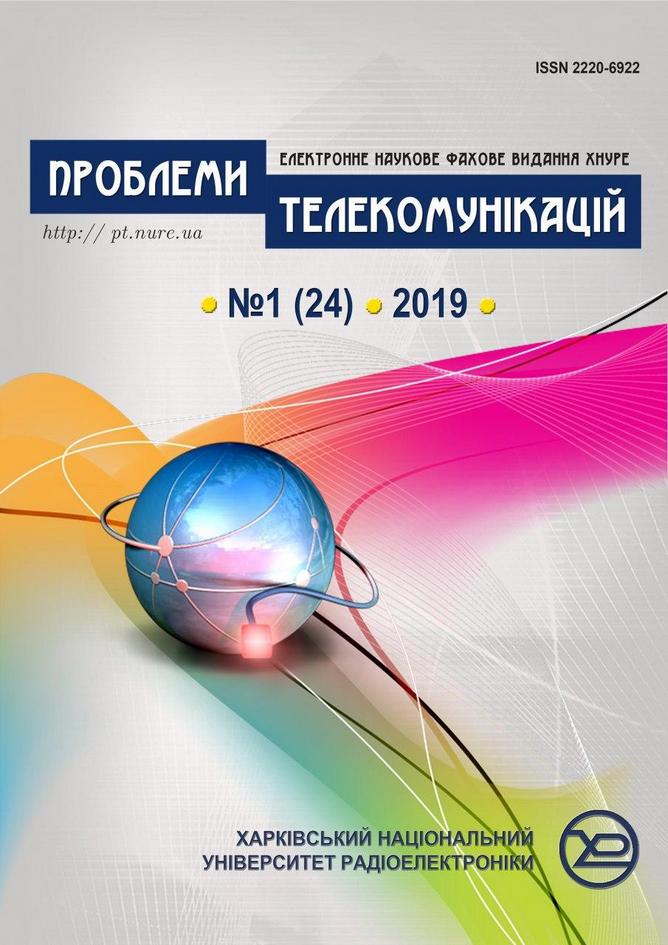Analysis of the characteristics of the algorithms for embedding watermark against the background of attacks and interference in communication channels
DOI:
https://doi.org/10.30837/pt.2019.1.03Keywords:
Steganography, Video file, Algorithm, Digital watermark, AuthenticationAbstract
In this paper, an overview of the algorithms of concealing information in the video, which can be used to protect copyright, has been made. A new algorithm is proposed that allows increasing the bandwidth and stability of existing methods by increasing the number of coefficients for embedding and application of noise immunity codes. An effective way to resolve copyright issues is to provide authentication through the introduction of digital watermarks embedded with steganographic algorithms. The scientific novelty of the work is that the theory of embedding information in video files has been further refined by taking into account factors that arise in communication channels, such as attacks and interference. This enhancement makes it possible to increase the efficiency of the system of transmission of hidden (embedded) information by interference channels through the use of fault-tolerant codes and the selection of the optimal latency criteria of transmission parameters (including the embedding threshold). The practical significance of the work is determined by the fact that most of the copyrighted information has to be transmitted by the communication channels and, in order to ensure an adequate level of effectiveness, the parameters of the copyright protection system must be consistent with the parameters of the communication channel.References
Конахович Г.Ф., Пузыренко А.Ю. Компьютерная стеганография. Теория и практика. К.: МК-Пресс, 2006. 288 с.
Конахович Г.Ф., Пузыренко А.Ю. Компьютерная стеганография. Теория и практика. Москва: СОЛОН-Прес, 2002. 272 с.
Essaouabi A., Ibnelhaj E., Regragui F. A Wavelet-based object watermarking system for MPEG4 Video. International Journal of Computer Science and Security (IJCSS). 2010. Vol. 3, No. 6. P. 449-461.
Nikolaidis N., Pitas I. Robust image watermarking in the spatial domain. Signal processing. 1998. Vol. 66, No. 3. P. 385-403. DOI: https://doi.org/10.1016/S0165-1684(98)00017-6.
Content Based Video Authentication UsingDWT, 2019. URL: https://github.com/ryokugyu/ContentBasedVideoAuthenticationUsingDWT.
An Efficient Video Watermarking Using DWT Fractional Order SVD. URL: https://github.com/manish2kk/An-Efficient-Video-Watermarking-Using-DWT-Fractional-Order-SVD.
Koch E., Zhao J. Towards robust and hidden image copyright labeling. In IEEE Workshop on Nonlinear Signal and Image Processing. 1995. Vol. 1. P. 123-132.
Shostak N., Astrakhantsev A., Romanko S. Сomparative analysis of effectiveness video watermarking techniques. Science of Europe. 2017. Vol. 15. P. 92–95. URL: https://cyberleninka.ru/article/n/comparative-analysis-of-effectiveness-video-watermarking-techniques.
Arena S., Caramma M., Lancini R. Digital watermarking applied to MPEG-2 coded video sequences exploiting space and frequency masking. 2000 Image Processing (Cat. No. 00CH37101): Proceedings of the International Conference. Vancouver, BC, Canada, 10-13 Sept. 2000. Vol. 1. IEEE, 2000. P. 438-441. DOI: https://doi.org/10.1109/ICIP.2000.900989.
Swanson M.D., Zhu B., Chau B., Tewfik A.H. Multiresolution video watermarking using perceptual models and scene segmentation. Image Processing: Proceedings of International Conference. Santa Barbara, CA, USA, 26-29 Oct. 1997. Vol. 2. IEEE, 1997. P. 558-561. DOI: https://doi.org/ 10.1109/ICIP.1997.638832.
Downloads
Published
Issue
Section
License
Copyright (c) 2019 Natalia Shostak

This work is licensed under a Creative Commons Attribution-NonCommercial-ShareAlike 4.0 International License.
Authors who publish with this journal agree to the following terms:- Authors retain copyright and grant the journal right of first publication with the work simultaneously licensed under a Creative Commons Attribution License that allows others to share the work with an acknowledgment of the work's authorship and initial publication in this journal.
- Authors are able to enter into separate, additional contractual arrangements for the non-exclusive distribution of the journal's published version of the work (e.g., post it to an institutional repository or publish it in a book), with an acknowledgment of its initial publication in this journal.
- Authors are permitted and encouraged to post their work online (e.g., in institutional repositories or on their website) prior to and during the submission process, as it can lead to productive exchanges, as well as earlier and greater citation of published work (See The Effect of Open Access).

